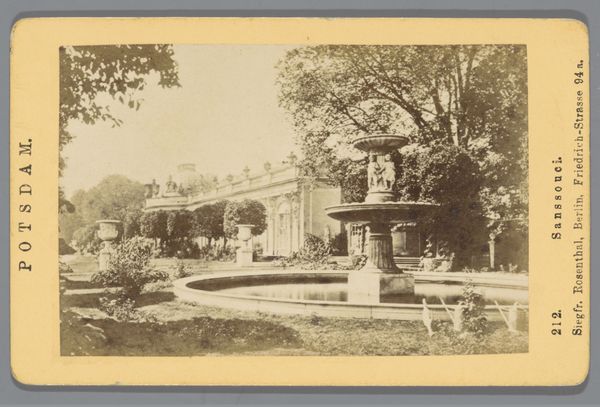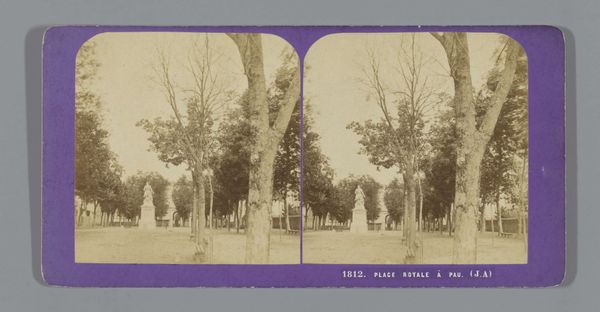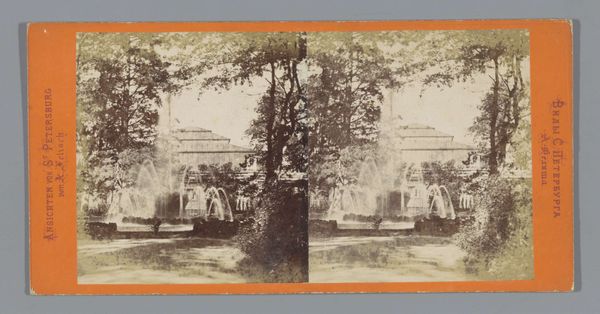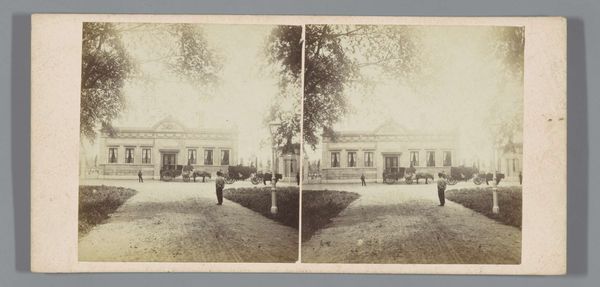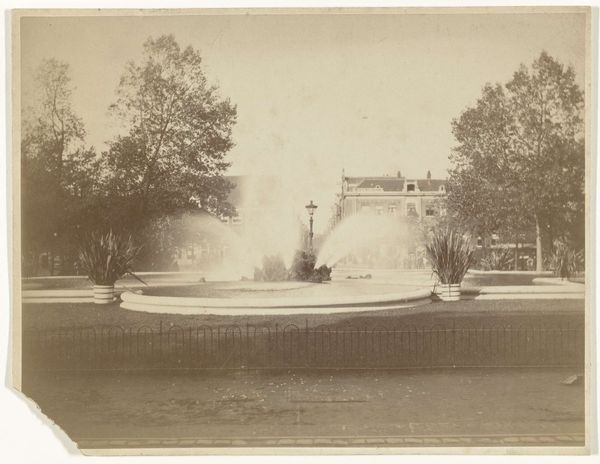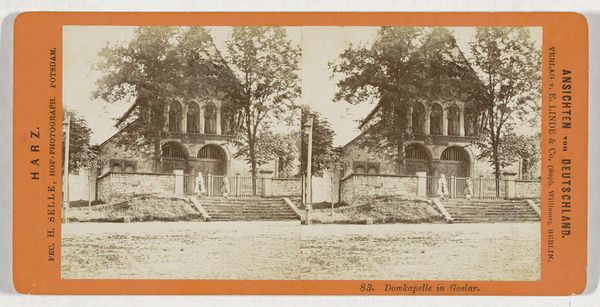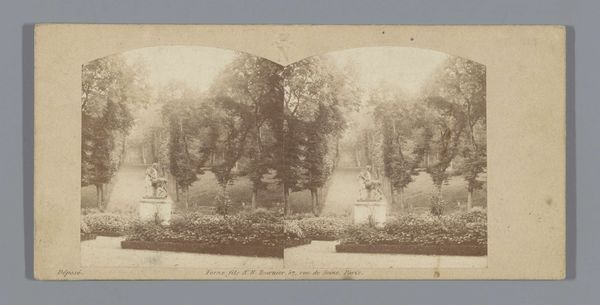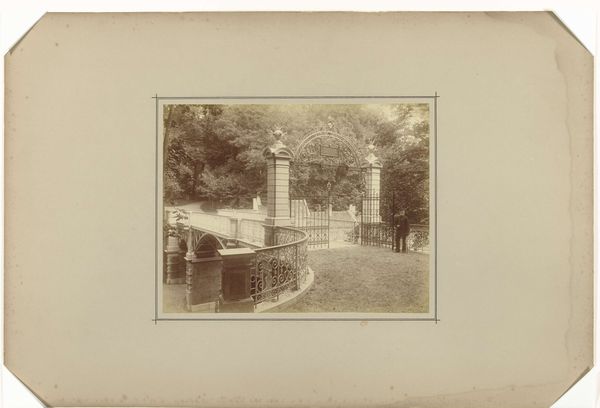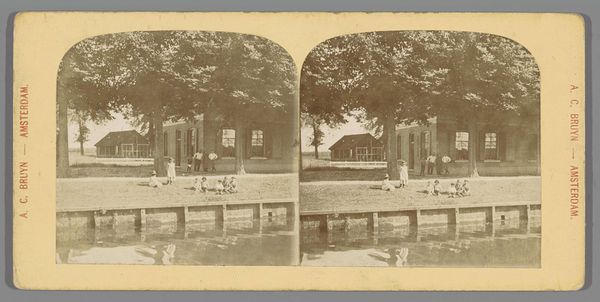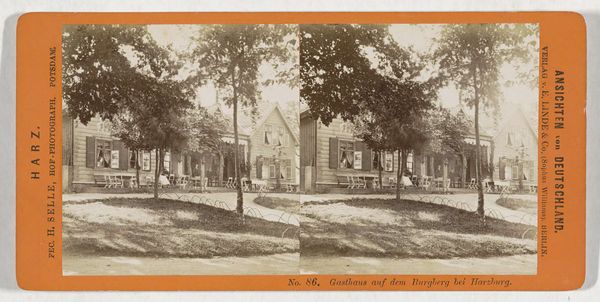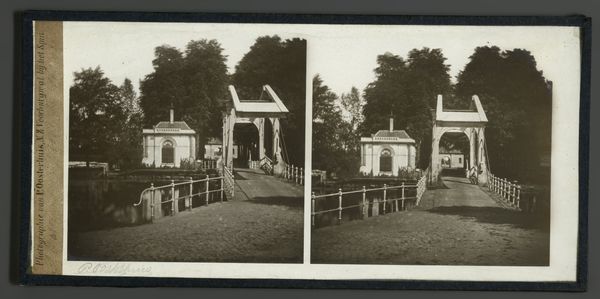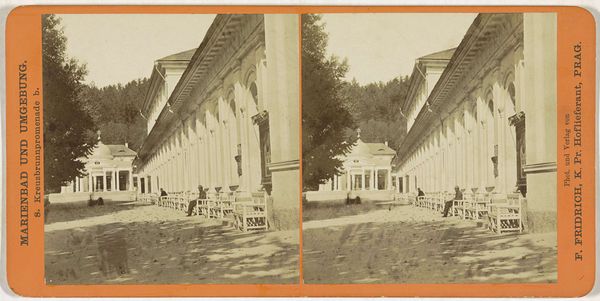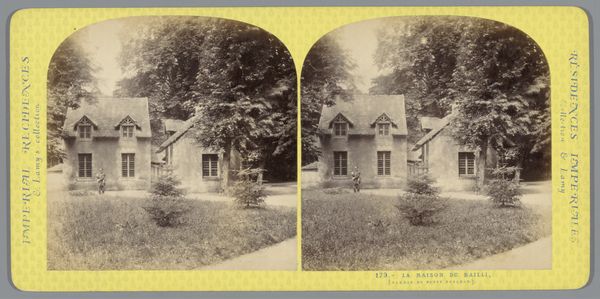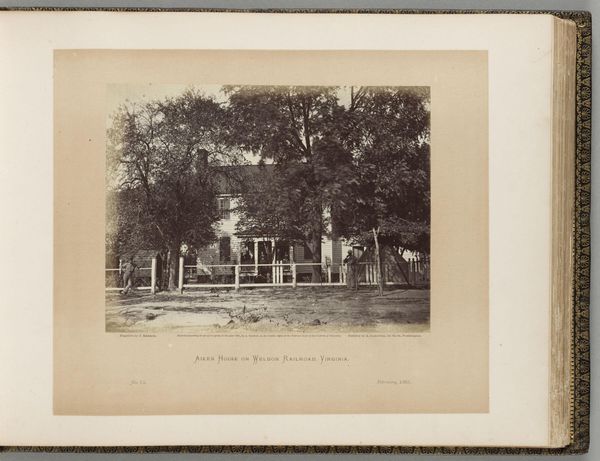
Dimensions: height 87 mm, width 176 mm
Copyright: Rijks Museum: Open Domain
This photograph by Hermann Selle captures the monument to F.G. Klopstock in Brühlpark, Quedlinburg. It’s a stereo card, a popular form of 19th-century entertainment achieved by combining two nearly identical photographs to create a single three-dimensional image. Consider the work involved: from the darkroom expertise needed to develop the print, to the mechanical process of mounting and cutting. While photography democratized image-making, it also introduced new forms of industrial labor. Individuals were now employed in factories to mass-produce these images, trading the unique skill of the artist for repetitive, assembly-line tasks. The monument itself, made of stone and iron, speaks to the era’s emphasis on permanence and public virtue. Photography provided a means of capturing and disseminating this monument, making it accessible to a wider audience, yet also commodifying it as a consumable product. Photographs like this one challenge traditional distinctions between art and craft, revealing the complex interplay of skill, labor, and technology in the production of images.
Comments
No comments
Be the first to comment and join the conversation on the ultimate creative platform.
